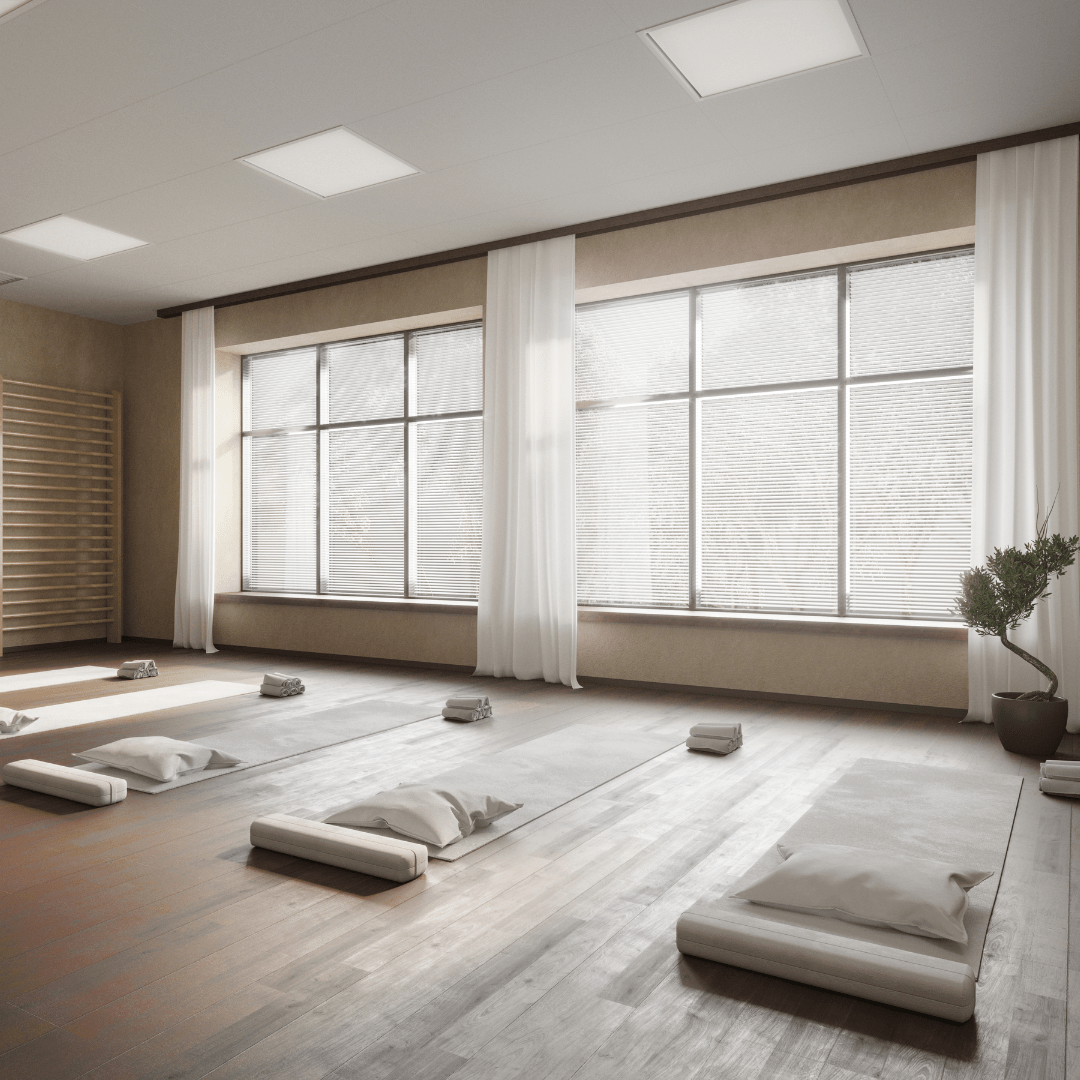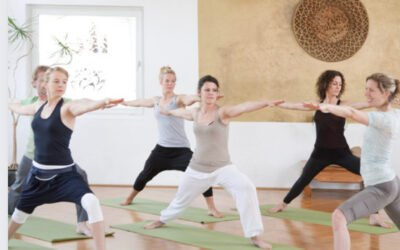A classic yoga class is sometimes structured in an uncomfortable way or inaccessible to people with endometriosis. This even without you being aware of it. However, it is important to plan a special layout of your course or room.
What common elements do women affected by endometriosis face at a yoga class? How to adapt and meet their needs?
Let’s take stock of some elements of a yoga adapted to the endometriosis within your structure.
Exerruring stress to register for a yoga class
One of the common manifestations of endometriosis concerns sensitivity. The woman with endometriosis is more sensitive to stressful factors, as well as anxiety. For many, everything new scares and creates stress that can be tiring for women, such as:
- go to an unknown place (the studio or yoga room);
- meet new people;
- have a new yoga teacher (despite his benevolence).
Going to a yoga class can become a great source of stress and anxiety. Registering for a course, on a specific date, also raises fears, worries and even fears. Indeed, the woman affected by endometriosis has many questions:
- Will I not be too tired?
- What if I have my period?
- What if I have pain?
We know that stress has a negative effect on endometriosis. In addition, clinical studies clearly indicate this:
- Endometriosis is a condition associated with high levels of chronic stress.
- The intensity of stress correlates with the intensity of pain and the development of the disease.
- The disease is associated with a higher level of stress, anxiety, depression and post-traumatic stress disorder.
- Repeated and uncontrolled stress promotes the development of endometriosis and accelerates the growth of lesions.
- Stress increases inflammation.
When anxiety invites itself into the practice of yoga
Sometimes, women with endometriosis try a yoga class. Unfortunately, they leave seeing that the classes are not suitable. During practice, pain can appear or in some cases worsen.
Also, they leave with a feeling of frustration or guilt. Why? Simply because they cannot perform the proposed postures. Despite a type of soft yoga (yin, restaurateur…) or the softness of some yoga poses, such as the inverted butterfly or the child’s position. You would be surprised at the number of women for whom these postures are physically and mentally uncomfortable. At times, these positions even become impossible.
In addition, some women think that this discomfort is quite normal. However, when you are affected by endometriosis, you are looking for appeasement, softness, comfort. We are also looking for space and fluidity in a body that is continually painful, tired, etc. These same women then enjoy moving to a yoga class adapted to endometriosis. Thus, they feel reassured when the teacher has taken EndoYoga® training.
The hypervigilances of the woman affected by endometriosis
For example, a woman with endometriosis can stand right in front of a wall, in a corner. Sometimes, it can also position itself in front of the door or in front of a window. This is why she sometimes has difficulty concentrating and maintaining relaxed attention in a posture or breathing. She will constantly look at her teacher or the other students.
In the yoga room
It may show signs of discomfort in some postures. Although the latter are known to be relaxing or to bring more fluidity and mobility to the pelvic region. In this case, we can perceive that this woman remains on “alert”, despite the restorative and relaxing postures.
It quickly becomes exhausting and trying. His nervous system remains in “survival mode”, flight or combat. Not to mention that all this becomes a source of inflammation in his body. Moreover, one of the common symptoms of endometriosis is chronic fatigue. Imagine a yoga class that brings in addition to fatigue, it’s contradictory anyway!
This discomfort can even create tension or contractions of certain parts of the body. This is to protect yourself, even when you want to seek to create ease and space in areas of the body.
However, this does not create the favorable conditions to settle in postures, relax, enjoy the benefits of yoga practice on the body and mind. You study this important part (module of the teacher’s guide), in my yoga training adapted to endometriosis.
During a yoga class
The woman can apprehend some practices, postures or breathing. Let’s take an example: the woman remains contracted, because she does not know how to release certain areas of the body. To do this, she tends to contract parts of her body. Either to “compensate” or to think “protect” areas of certain practices.
However, this will create even more tension and thus cause pain. We learn this in the EndoYoga® training. This will allow and authorize the woman to welcome appeasement at the physical and mental level during practice.
Listening and observation are sometimes very subtle and essential signs. You thus accompany your student on the path to well-being with endometriosis, thanks to yoga.
Yoga adapted to endometriosis: set up your room
You have the opportunity to set up your classroom and practice, in order to promote the feeling of appeasement and security for the woman.
I offer you some general advice that you can put in place:
- If you offer an individual or group class, ask very discreetly if she is in her menstrual period. Obviously, the woman should not be on a continuous pill, artificial or natural menopause. This information will allow you to guide her throughout the session, in the way most adapted to her period of the cycle.
- At the beginning of the session, remember that everything that is said and done in this room remains in this room. Dissmance can still be experienced in some situations. For example, Mrs. Bidulle, present at the course, may tell your presence at a course dedicated to endometriosis to Madame untel’s girlfriend. She will then find out that you are suffering from this disease.
- Similarly, leave a fairly large “time” of beat between two courses. Also, avoid having a prenatal or postnatal or baby-parents course following a course adapted to endometriosis. Indeed, 30 to 40% of women with endometriosis have difficulties in their pregnancy project. This could “break” all the benefits of the course and put them in great sadness and suffering.
- If you work individually or with a small group (which I recommend), you can ask participants to install their carpets in a circle. Thus, it allows everyone to find themselves with their backs to a wall, rather side by side and in a row.
- As a teacher, you can sit near the door when the person is relaxing. In this way, she can relax completely.
- With some postures, you can offer him to add a blanket placed in a certain way. And this in such a way as to surround her with a bubble of cocoon and comfort, so that she feels more comfortable to enjoy the posture.
- You can remind at the beginning of the course that the person can get up discreetly if he needs to change his hygienic protection. You can even make them available in the sanitary facilities. During her menstrual cycle, with her heavy periods, she will not wonder if her protections will be enough or not. On the contrary, she will be able to take full advantage of the practice throughout the course.
- In some cases, having black towels to put on the carpet can be appreciated. Even if there is no leak, it can reassure you to know that we will just have to place this textile piece in the laundry bin.
- Finally, your presence and listening are two qualities that already do a lot of good to the woman suffering from endometriosis. It will brighten up his day or even his life, to have met you.
Do you want to go further? Book a free exchange with me or check all the details on this page to become an EndoYoga Flow ® certified yoga teacher



0 Comments